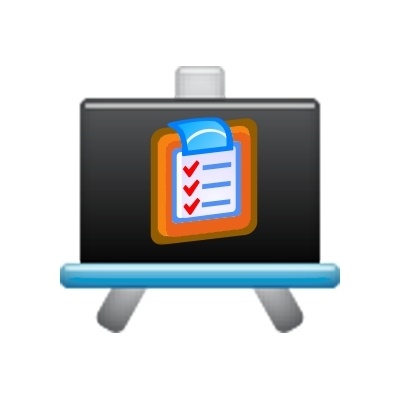Online Testing In The Workplace
The only way to truly gauge the effectiveness of your corporate training strategy is to have a solid assessment plan in place. Online testing gives you the opportunity to gather valuable data and track employee performance. In this article, I'll discuss the benefits and basics of online testing in the workplace, including tips for how you can use this assessment strategy in corporate learning environments.
3 Benefits Of Online Testing In Corporate eLearning
- Measures performance goals.
One of the most notable benefits of online testing in the workplace is the ability to measure goals effectively. Some goals can be difficult to quantify, such as developing customer service skills or honing sales techniques. However, if you create online assessment that center on these skill sets you can get a better idea of how far your employees have come and how far they need to go in order to achieve their performance goals. This is particularly true if you use more interactive quizzing methods, such as scenarios and simulations. - Emphasizes key ideas and concepts.
One of the challenges that many corporate learners face is information overload. There are so many compliance regulations, company procedures, and new product features floating around in their minds that it becomes difficult to focus on the key takeaways. This is where online testing comes into play. By creating a test that centers on the key ideas and concepts, your learners can direct their attention where it needs to be and concentrate on the information that they should bring away from the online training experience. - Identifies organizational weaknesses and strengths.
Online testing offers two-fold benefits when it comes to identifying strengths and weaknesses. Firstly, it gives organizations the opportunity to figure out where their online training is lacking and where it excels. For example, if multiple employees aren’t grasping the task feature in the second training module, then they know that they may need to fine tune that aspect of the eLearning course. It also gives employees the chance to determine their key strengths and areas of improvement. If they struggle with the online assessment, that may be an indication that they should focus on that training module and use supplemental training resources to help them improve.
4 Tips For Using Online Testing In The Workplace
- Have an effective feedback system in place.
A winning online testing strategy is incomplete without an effective feedback system. Corporate learners require immediate feedback, so that they can fix incorrect behaviors and learn the correct information, instead of memorizing improper procedures. For example, if they are unable to identify each of the steps involved in a common work task, immediate feedback will help them to remedy the situation as soon as possible and master the task correctly. You should also take it a step further by telling them why their answer was incorrect or offering them additional resources that can help them if they are struggling with the topic. - Focus on real world objectives.
Most, if not all, training programs focus on ideas or concepts that can be tied to real world challenges or situations. After all, the primary goal of online training is to give corporate learners the tools and skills they need to boost productivity and fulfill their job duties effectively. For this reason, it’s essential to concentrate on real world objectives when you’re creating your online tests. Instead of focusing on the facts, put them into a real world context or show your learners how they can apply the knowledge outside of the training environment. If you are creating a multiple choice or true-false test, quiz their ability to put the information and skills they have learned to good use on-the-job. For example, instead of testing them on their knowledge of a particular product and all of its features, give them a set of multiple choice responses that feature a customer and their needs, then ask them to choose which customer would benefit most from the product. They probably aren’t going to be listing all of the features on the sales floor regularly, but they are going to have to know which product is ideal for which customer. - Develop sequencing questions to test task mastery.
More complicated tasks or processes can be tested using sequencing questions. A sequencing question involves a series of events that are placed in random order. The employee must then put the steps in order to correctly answer the question. For instance, if you want to test their ability to repair a computer, write out each of the steps involved in the process, and then scramble their order. The employee must arrange them in their proper order, using their previously learned knowledge. - Create scenarios and simulations to add interactivity.
Scenarios and simulations are popular training activities, but they can also be valuable assessment tools. They can determine if the employee has mastered a specific skill or task, and even show them the consequences of their actions without any real world risk involved. Best of all, you can easily integrate real world challenges and situations into these online assessments, and even make it more personal by adding images of the workplace or co-workers.
Integrate these online testing methods into your corporate training strategy to assess employee knowledge and stay up-to-date with compliance standards. Testing in the workplace will also enable you to fine tune your corporate eLearning courses, so that your learners achieve performance goals and build job related skill sets.
Looking for additional tips on how to create mobile learning assessment for your corporate learners? Read the article 5 Tips To Develop Mobile Learning Assessments to find 5 tips that can help you develop on-the-go exams that track employee performance and identify areas of improvement.









